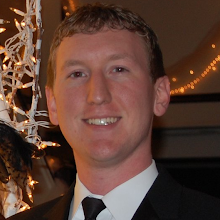Gimp is a very powerful program with many different tools to edit your photos however you want. With this massive amount of functionality comes a steep learning curve. Watching some great gimp tutorials will help you learn, but be aware that there are several tutorials out there that are not teaching you the best way to do things. Here are 3 very common bad habits that I have found some tutorials are teaching online, and I wanted to bring attention to then so you are aware of these and are able to avoid them when possible.
Trying to Edit the Whole Photo at one Time
this one is one of the biggest culprits. Too often I will see a tutorial that teaches you how to enhance a photo by editing the entire photo at one time. Although there are always goings to be circumstances where this is a viable option, more often than not this is not the best way to go about doing things in gimp. Instead of making all of your edits on a single layer with the various color modification tools, try duplicating the layer of the image that you are wanting to modify and the modify that image. You can then use a layer mask to mask off everything but the area that you actually intended on changing the exposure of. A great example of this in action is my gimp tutorial on how to expose a waterfall using gimp.
Erasing instead of Masking
Is this drilled in your head yet? If not, odds are you haven't seen too many of my gimp tutorials yet. Using the eraser tool where a layer mask can be used instead is one of the most frustrating and limiting habits people get into. I know it is a few extra steps to make a layer mask, but it is well worth the extra effort once you understand how these can become a very powerful tool for your photo editing. If you are not familiar with layer masks, I highly recommend that you watch this gimp video tutorial on layer masks before you ever erase or delete anything using gimp again.
Assuming That Gimp can Easily Fix Anything
Often times, people will jump into photo editing assuming that these photo editing programs will be able to turn their photos into photography gold with little effort on their end at all. My gimp zombie image took over 30 layers and 4 hours of my time to make, and that was with a well-prepared photo taken specifically for the task of making myself into a zombie. My point is that it WILL take time and it DOES take effort to get good results from your photo editing. One of my free exclusive lessons about gimp talks about "shooting for the edits," which is an important lesson to learn about photo editing, because it teaches you how your camera and gimp can work together to create the best image. Stop thinking about gimp as a tool that can fix your photographs, and start thinking about gimp as a tool that can be used in combination with your camera to create images that would have otherwise been very difficult or impossible to do.

Good stuff, Alex, especially #1. Regarding #3, I think the important thing to remember is that an unedited photo needs to be properly exposed and stand on it's own compositionally.
ReplyDeleteAnd yes, I did just end that sentence with a adverb.
You're definitely right Rick. Your photo (or often times photos) need to have a good composition. Gimp can't change what a photo is made up of very well. Perhaps I should recommend a good photography book on here while I'm at it.
Delete